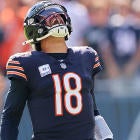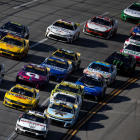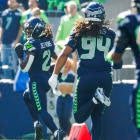
While most of the preseason Heisman buzz is going to the likes of returning vote getters Matt Barkley and Montee Ball, West Virginia quarterback Geno Smith is gaining traction as a viable alternative should any of the front runners falter.
That's no surprise since, barring injury, Smith is a lock to put up outstanding numbers in 2012. The third-year starter threw for 4,385 yards and 31 touchdowns last season in his first crack at new coach Dana Holgorsen's offense, so year two in that system should produce more of the same.
But while much of the focus about Smith has been on his prolific passing numbers, the fundamentals of his candidacy provide him an advantage that may be unprecedented in Heisman history.
First, let's review Heisman voting procedures. It's important to remember that the Heisman vote is split up into six regions: The Northeast, the Mid-Atlantic, the Southeast, the Southwest, the Midwest and the Far West. Each region has 145 media votes, totaling 870 across the country (former Heisman winners comprise the rest of the electorate).
As a matter of practice, it is common for voters to have a predilection toward players who come from their region. This is not necessarily the result of a bias so much as a natural tendency to latch on to the close and familiar. A writer in San Jose is going to see and hear more about a Stanford quarterback on a day-to-day basis than he will a quarterback from Boston College. A reporter in Jacksonville is probably going to know what Aaron Murray looks like without a helmet, but may have no idea what Landry Jones looks like unadorned.
To win the Heisman, a player must expand his name recognition beyond his own region. He must become a national candidate whose persona and accomplishments become known from one end of the country to another. This is not always easy to do, which is why schools sometimes run campaigns.
Which brings us back to Smith.
As the result of conference realignment, he may be the first legitimate Heisman candidate who will play the vast bulk of his schedule against schools from one region (the Southwest), while his own school (and much of his reputation as a player) resides in another (the Mid-Atlantic).
Smith's exploits this season will be well-known to writers in the Mid-Atlantic--they've been covering him for a couple seasons now and he'll cast a large shadow in that region despite playing in a league a thousand miles away.
Meanwhile, Smith is set to become very familiar to media in the Southwest as he tests his mettle against the likes of Texas and Oklahoma. He's off to a good start already--he was named the preseason Big 12 Offensive Player of the Year at the league's media day.
If Smith has the kind of season everyone expects and West Virginia makes a splash in the Big 12, it's no stretch to foresee him garnering strong Heisman support in the Southwest and the mid-Atlantic regions. Locking up two of the six regions would catapult him into Heisman contention and send him to New York as a finalist. Even if Smith doesn't win the Heisman, his presence in two of the six voting regions could heavily influence the outcome of the race.
Candidates like Barkley, Ball and Denard Robinson are already well-known to voters across the different regions. That's why they are in the upper tier of Heisman contenders heading into the season. But maybe Smith's quirky geographic advantage should put him in that group, too.
Indeed, it appears conference realignment has set the stage for the West Virginia quarterback.
Now, all he has to do is perform.















